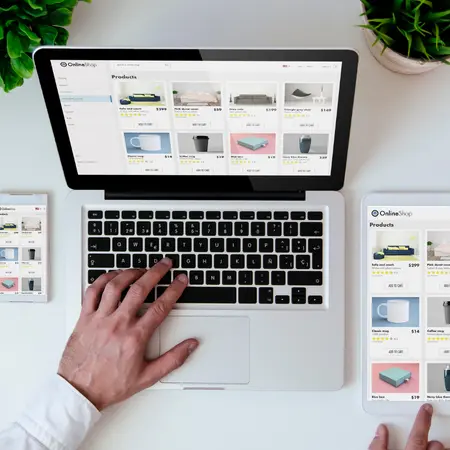
How To Enhance Site Navigation for Better User Experience
A site’s navigational elements are the tools that allow users to interact with a website. The more quickly you can find your way around, the more likely you will be to stay on and complete whatever action was motivating your visit in the first place.
Navigation is an essential part of any website, but it can be especially tricky when you’re trying to create a site that is both visually appealing and easy to use. We will guide you through creating a user-friendly navigation system and show you how to apply it on your website.
Understanding User Needs and Behavior
Before you can create effective site navigation, it’s vital to get your users’ input. Some popular techniques for researching user behavior include user surveys, heat maps, and analytics data.

User Surveys
User surveys are an excellent way to collect feedback from your users. They can provide valuable insights into what your users are looking for and struggling with on your site. When creating a survey, ask open-ended questions to get more detailed responses.
Heat Maps
Heat maps visually represent where people have clicked or scrolled on your website. These allow you to identify areas that are popular and need improvement quickly. You can make informed decisions about where to place important information and calls to action by analyzing heat maps.
Common User Behaviors
When designing site navigation, it’s important to remember how real users behave when browsing a website. Understanding these user behaviors can help you create navigation that people intuitively understand and enjoy using.
Analytics Data
Analytics data provides you with valuable insights into user behavior on your website. For example, you can learn a lot about your website’s performance by analyzing metrics like bounce rate, time on page, and click-through rate. For instance, if users spend very little time on a particular page, it may indicate that the content needs to meet their needs.
Defining Navigation Structure
Once you understand your target audience and what they’re looking for, you can identify how best to present information on your website. The first step is to identify the major sections of your website and how they’re related. This will help you determine how to organize your navigation and what information should be available on each page. There are several different types of navigation structures:
Hierarchical Navigation
Hierarchical navigation is a common way of organizing information. It involves organizing content into parent categories and subcategories that form a tree-like structure. This type of navigation works well for large websites with lots of content.
Hierarchical navigation is commonly found on e-commerce websites where users can browse products by category. Category pages link to subcategories, which connect to more detailed information about the product.
Flat Navigation
Flat navigation builds a single level of links to all the site’s pages. This type of navigation is ideal for smaller websites with less content than regular sites and apps, but it could be used on any size website or app as long as its structure can remain consistent across multiple platforms.
The flat navigation style is also ideal for mobile apps. Since there is limited screen space, it’s important to keep navigation simple so users can quickly find what they’re looking for.
Faceted Navigation
Faceted navigation allows users to filter their search results by multiple criteria, making it ideal for large e-commerce sites with a wide variety of products.
The most common type of faceted navigation is a drop-down menu that allows users to filter results by different criteria, such as price, color, and size. This site style also allows for custom facets based on specific product attributes, such as style or material.

Tips for Creating an Intuitive Navigation Structure
Regardless of which navigation structure you choose, you can follow several tips and best practices to ensure that your navigation is intuitive and easy to use. These include:

- Keeping the number of menu items to a minimum: The more you have, the longer it will take your users to find what they’re looking for. In general, limit your navigation options to between 5 and 10 items. Drop-down menu options can help save space in a navigation bar while providing users with plenty of filtering options.
- Using clear and concise labels: Make sure your menu labels accurately reflect the content on each page. Use descriptive but concise wording. If a menu item is only available on a particular page, then don’t list it in the navigation bar for every page.
- Placing essential menu items in prominent locations: Your navigation bar should contain the most important links on your website. If links only apply to a specific page, place them in the body of that page.
- Using logical groupings: Organize your content so that related topics are clustered. This will help users find what they are looking for and reduce the required scrolling amount.
- Providing breadcrumb navigation: A breadcrumb trail, or path of least resistance back to the home page, is an essential navigational aid for users.
- Using a search bar: The search bar is crucial to site navigation because it lets users quickly find what they’re looking for. It’s also an excellent way for users to discover new content and find relevant information.
Designing Navigation Elements
The following are some of the more common navigation elements you’ll find on a website:
Menus
Menus are the most common element for navigating a website. They allow users to access different pages on your site quickly and easily. There are several types of menus you can use, including:
- Horizontal menus run along the top of a web page and are well-suited to sites with just a few pages.
- Vertical menus are perfect for long lists of links, such as those that might appear on an e-commerce site or directory.
- Drop-down menus provide users quick access to subcategories by hovering over a parent category.
Breadcrumbs
Breadcrumbs are a navigation tool that helps website visitors understand where they are around the larger site. They look like a series of links at the top of a page, pointing users back toward home if necessary and showing how users arrived there from other pages on your website. Breadcrumbs are often used with drop-down menus or different types of navigation. They help users understand where they are in relation to the larger site structure.
Filters
A filter is a type of navigation element allowing users to narrow their search results by selecting specific criteria. For example, on an e-commerce site—where multiple products are available—users might apply filters such as price and size to better match the product they’re looking for. Filters can be used for any content most commonly seen on product pages.
Optimizing Navigation for Mobile Devices

Responsive Design
Responsive design is a technique in which web designers optimize their sites to display well on all devices, including desktops, tablets, and smartphones.
This is an integral part of web development, allowing for a seamless user experience. When done correctly, responsive designs enable users to seamlessly transition from one device to another without resubmitting their information or navigating through multiple pages.
Mobile Navigation Patterns
There are several common ways to navigate on a mobile device; they’re all essential to understand. The key is to ensure your users can easily find what they need and get back to where they came from as quickly as possible. The most common navigation pattern is the hamburger menu, which offers three options: Home, Menu, and Search.
It’s a simple design that makes it easy for users to find what they need without having to scroll through multiple pages or menus. Another popular design is the “hamburger button” on mobile devices; this icon looks like three stacked lines and is often used with other icons to provide more information about each option.

Closing Notes
Improving site navigation is crucial for providing a seamless user experience on your website. By understanding user behavior, defining your navigation structure, designing your navigation elements, and optimizing for mobile devices — you can create a seamless experience that will increase conversion rates.
Digital Results will gladly assist you if you need assistance auditing your website to ensure it is optimized for SEO and user experience. Feel free to reach out for a free 30-minute consultation, and we will have our website audit experts assist you and your team.






